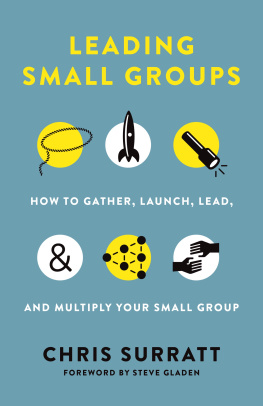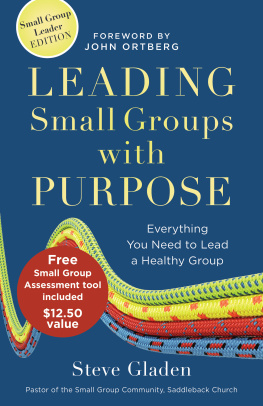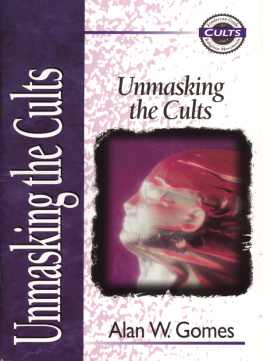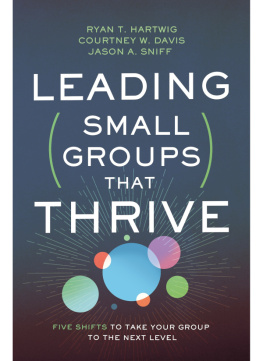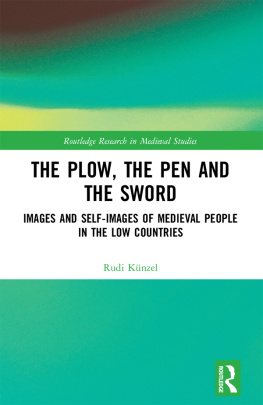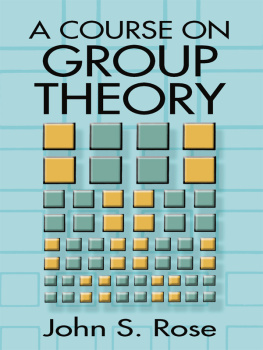Plays Well in Groups
Plays Well in Groups
A Journey through the World of
Group Sex
Katherine Frank
ROWMAN & LITTLEFIELD PUBLISHERS, INC.
Lanham Boulder New York Toronto Plymouth, UK
Published by Rowman & Littlefield Publishers, Inc.
A wholly owned subsidiary of The Rowman & Littlefield Publishing Group, Inc.
4501 Forbes Boulevard, Suite 200, Lanham, Maryland 20706
www.rowman.com
10 Thornbury Road, Plymouth PL6 7PP, United Kingdom
Copyright 2013 by Katherine Frank
All rights reserved. No part of this book may be reproduced in any form or by any electronic or mechanical means, including information storage and retrieval systems, without written permission from the publisher, except by a reviewer who may quote passages in a review.
British Library Cataloguing in Publication Information Available
Library of Congress Cataloging-in-Publication Data
Frank, Katherine, 1968
Plays well in groups : a journey through the world of group sex / Katherine Frank.
p. cm.
Includes bibliographical references and index.
ISBN 978-1-4422-1868-0 (cloth : alk. paper) -- ISBN 978-1-4422-1870-3 (electronic)
1. Group sex--History. 2. Sex--History. I. Title.
HQ21.F766 2013
306.77--dc23
2013009897
The paper used in this publication meets the minimum requirements of American National Standard for Information Sciences Permanence of Paper for Printed Library Materials, ANSI/NISO Z39.48-1992.
Printed in the United States of America
Acknowledgements
Does one dedicate a book on group sex? If so, perhaps an appropriate dedication would be: To those who cant keep to the road less traveled, but veer off into dark alleyways marked Do Not Enter.
To say that the path to get here has been winding would be an understatement. It was, however, a path with heart, and I am grateful to everyone who supported me along the way. This book would not exist at all if not for a memorable night spent at a pub in Canada with Paul Vasey, at a time when I was struggling with how to move forward with my research on nonmonogamy. Although I might not have been able to do justice to our original ideas here, our conversations were the catalyst for this project.
As this manuscript took shape, Mustafa Emirbayer provided insightful comments on nearly every chapter, helping me clarify my thoughts and contributing greatly to the book. He also reassured me during the writing process when I was overwhelmed, encouraging me to leave it all on the field (and then patiently explaining the sports metaphor). He is a versatile intellectual and his enthusiasm for knowledge is inspiring. Michael Bader also provided invaluable comments on the entire manuscript. I am thankful for his wisdom, friendship, willingness to debate, and the critical eye he brought to my work.
Al Gelbard was on-call for clarifications of legal issues in the United States regarding sexual expression and pornography. Pardis Mahdavi and Staci Newmahr responded readily to my questions, and our conversations were as valuable to me as their research. Many other individuals offered comments on sections of the manuscript, and I am grateful for their time and expertise: Paul Vasey, Thomas Foster, Keith McNeal, Dany Nobus, Philip Castle, Ken Haslam, David Ruecker, Tina Davis, Robert Phillips, Michael Bailey, Gary Wynn, Kevin Yelvington, Sir Ivan, and Clayton Barlow.
Because the literature on group sex is scattered across disciplines, I appreciated the many colleagues who responded to my queriesDid you hear of any consensual group sex when you conducted research in Romania? Cuba? Trinidad? The Democratic Republic of Congo? Kenya? Many individuals provided leads or answered other questions about their research, methods, or field sites: Christian Groes-Green, Meredith Chivers, Jack Friedman, Jeffrey Mantz, Jafari Allen, and Thomas Strong, among others. My thinking on the issues arising herepleasure, power, sex, transgressionwas also enhanced by conversations with Salvador Vidal-Ortiz, Michelle Newton-Francis, Michelle Carnes, Jane Ward, Susan Frohlick, Ken Zucker, other colleagues, and my feminist theory students at American University. Neil Whitehead was influential in my willingness to more intensely explore the complexities of human violence in sexuality, back when this manuscript was just handwritten notes; many times during the writing process, I missed him deeply.
Some of my interest in how witnessing and being witnessed in transgressive sexual activity became meaningful to people across time and place originated during my postdoctoral research at the University of Wisconsin, Madison. John DeLamater was supportive of my work on sexual exclusivity in relationships and of my quest to broaden my disciplinary and methodological scope. He was also an excellent mentor and role model. Although at that time I did not anticipate writing this book, what I learned about nonmonogamy during those years became the foundation for some of my later questions on the practice of group sex across identities. Our research on sexual exclusivity was funded by a postdoctoral fellowship from the SSRC Sexuality Research Fellowship Program. As the SRFP also funded my dissertation research, I was involved with the program for many years and thus had an opportunity to dialogue with dedicated sex researchers across disciplines. Diane di Mauro, the program head, was also an excellent mentor. Becoming involved with the International Academy for Sex Research (IASR), another interdisciplinary group of scholars, has been beneficial in continuing these conversations.
For the second time in my career, Ive written a book where I cannot acknowledge everyone by name. When I wrote G-Strings and Sympathy in 2002, it was still relatively transgressive. Some colleagues thought I should not come out as having worked as a dancer until after tenure and some people who provided feedback on the manuscript were worried about being named in the acknowledgments. But by the time that Danielle Egan, Merri Lisa Johnson, and I published Flesh for Fantasy in 2006, the dancers who contributed chapters were publishing under their real namesthen, it was the customers who used pseudonyms. Times had changed, at least for some. I hope that the same thing will happen againthat people eventually do not have to worry about the stigma attached to their sexual practices, or about the stigma of others haunting them even if they are simply commenting on a manuscript. For now, though, I certainly understand, and am thankful to everyone who agreed to share their narratives with me or provide feedback on sections of this book anonymously, including those on Facebook who responded to my posts and queries over the last three years (Will you take this online quiz for sex addiction? What childhood sexploration games did you play? What makes you feel alive?)
At Rowman & Littlefield, Sarah Stanton, Kathryn Knigge, and Christopher Basso were instrumental in massaging the manuscript into its final form. If it were not for their attentions and deadlines, I might still be investigating just one more fascinating example that should be included here.
My family deserves thanks for supporting me at every twist and turn, even if none of us were exactly sure where I was heading. Of course, so does my husband, who not only offers me the freedom to indulge my curiosity but also eventually asks the questions I should have, but didnt (What is a meat pie?).
Chapter 1
The Elementary Forms of Group Sex
August 2010, Black Rock Desert, Nevada
It was a dark and stormy night.
Well, dusty, anyway.
I tightened my fur hood against the spraying wind. Wearing goggles, industrial-strength dust masks, fur bikinis, and yards of pulsating electroluminescent wire to make us visible in the darkness, my comrades and I blinked our way into the wheel of camps making up Black Rock City.
Next page


